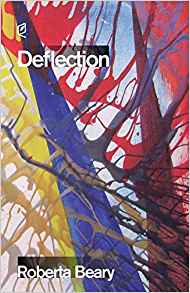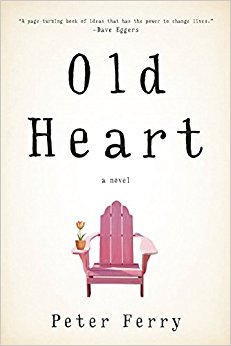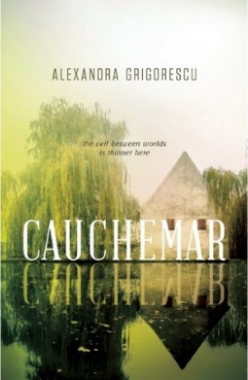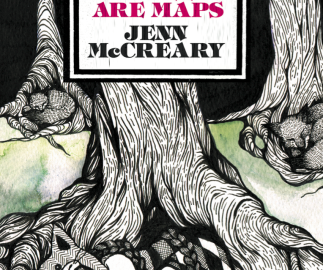Today is the first day of autumn, which for everyone living in the northeast means the ushering in of the colder, darker months. As the temperatures start to drop and the earthy smell of bonfire swirls up through the night air, the beginning of fall also tends to revive the old storyteller in each of us. In many cases, these stories tend to give a nod to the supernatural, regardless of what we actually believe. Witches, warlocks, ghosts, goblins…you pick your poison. These tales have been passed down around campfires and under sheets by flashlight presumably since the first person who was never seen again wandered off into the fog; however, few contemporary poets have dared to venture into that great divide separating children’s fairytales from predictable horror stories in a way that doesn’t feel tacky. In her recent Dusie Press release, & Now My Feet Are Maps, Jenn McCreary takes advantage of that open space, creating what Anselm Berrigan calls “wry, disarming, dream-imbued reformations of fairy-tale & folk-tale quests.”
I came across & Now My Feet Are Maps on a list of newly published poetry, and although the idea of “fairytale” poetry didn’t initially grab me, I instantly fell in love with the title and decided to give it a chance. What I found inside was surprisingly exciting. McCreary’s poetry blends fantasy, superstition, and the natural world in a way that is still interesting and somehow manages to feel important. It feels real without reading like a bad Disney movie. Supernatural might be a better word, or at least never silly.
The book is broken into four sections (Odyssey & Oracle, Magpie Augury, Maps & Legends, and Haunted Forest), each with their own distinct style.
Odyssey & Oracle is comprised of eighteen two-stanza untitled poems that tell a sort of fragmented story, each opening with an ampersand (McCreary loves her a good ampersand). They have a very strong, strange attention to detail and create landscapes that merge the real world with the fantastic. McCreary writes, “& when it starts to get dark, the tiny Vikings set / the table with three candlesticks, a mug of daisies / & dandelions, a jar of fireflies, a saucer / of tadpoles… / the fortune / cookie says: you have always lived / in the castle.” This is by far her most extraordinary section. Some of the poems read like little spells tangled with common conversation, and McCreary does a great job of making reality feel as though it’s capable of magic, which seems more mature than trying to transport readers to a different place altogether.
Magpie Augury shift gears, offering ten one-stanza prosy pieces. These poems are a bit more distant, taking a zoomed-out approach to the pictures they paint. These poems are titled and carry a slightly stronger weight where content is concerned. In “One for Sorrow”, McCreary writes, “with each passing moment, / I’m becoming part of the past. / As if there is no / future at all, just the past steadily accumulating: / trade-offs & take / backs, legion & aftermath. the / rate at which the human body falls.” Though this section’s poems don’t necessarily read like fairytales, they do have a sort of grownup bedtime story feel to them.
Maps & Legends has the broadest grouping of poems, at least where form is concerned. There are eleven poems of varying length that seem to tell disjointed renditions of old legends or fairytales (one which sounds a lot like the plot summary of The Labyrinth). Although the language isn’t wildly creative, the visuals are especially imaginative. McCreary’s blending of these stories, some new, some unfamiliar, creates a cohesive flow that seems logical, even if not totally related.
The last section, Haunted Forest, is comprised of ten shorter titled poems, all either one or two stanzas, which are based off of the paintings of S.J. Hart. This is probably the strongest section, as it has a wider focus where content is concerned, and a much closer attention to sound. In her poem Sometimes Pleasing, Sometimes Not, she writes, “I walked on knives / to get here & now / my feet are maps. In case / I forget. How / I got here.”
Although broken up into four section of varying forms, the underlying supernatural themes fully linked everything together in one way or another. Despite buying & Now My Feet Are Maps simply because of a beautiful title, I would recommend it to anyone who wants to read something slightly magical that still feels like a mature book of poems. Maybe light a few candles and pour a glass of mulled wine. It couldn’t hurt the experience.
[author] [author_image timthumb=’on’]http://minotaursspotlight.com/wp-content/uploads/2014/10/Fran-Bio-Image.jpg[/author_image] [author_info]Francis Daulerio is a poet and teacher from the Philadelphia suburbs. His work has recently been published in The Fictioneer, Whiskey Island, The Stone Highway Review, and Written River. His first full collection of poetry will be released in April 2015 through the Unsolicited Press. More information can be found at www.FrancisDaulerio.com and @FDwrites. [/author_info] [/author]




